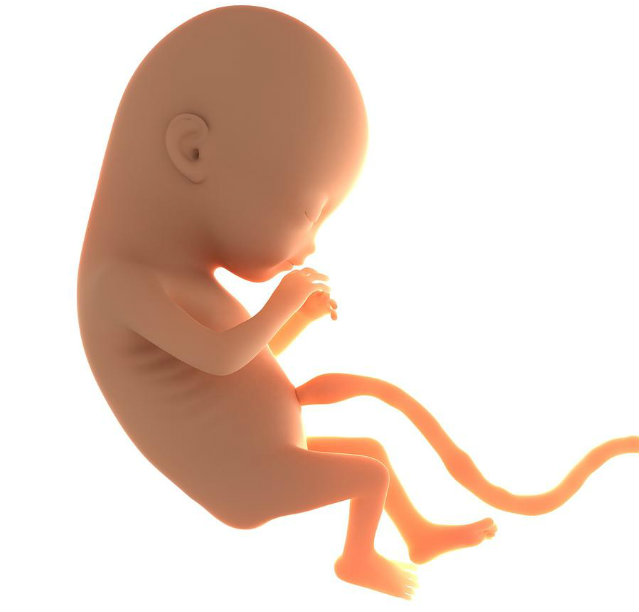Congratulations! You are a mother now. And as a new mother, you are bound to be a little paranoid about things, like that shrivelled thing near your kid’s navel. But don’t worry. It is just the remnant of her umbilical cord which was your baby’s lifeline when she was in your womb.
You might also be interested in reading:
- Week by Week Guide to Your Pregnancy
- Stem Cell Banking in India: An Overview
- Top 3 Stem Cell Banks in India: Which One Should You Go With?
- Analyzing Stem Cell Banking Cost in India
What is Umbilical Cord?
The umbilical cord connects your baby in the womb to you. It starts from your unborn baby’s stomach and goes till your placenta. After her birth, it becomes her umbilicus or the navel. It is also called the navel string, birth cord or the funiculus umbilicalis.
The cord forms by the fifth week of your pregnancy thereby replacing the yolk sac that was there for the first four weeks. At the 40th week of pregnancy, it is around 50cm in length. It usually contains two umbilical arteries and one umbilical vein buried within Wharton’s jelly.
The amount of blood flow through the umbilical cord is approximately 35 ml per minute at 20 weeks of pregnancy and around 240 ml per minute towards the end of the pregnancy.
What are the Functions of the Umbilical Cord?
The umbilical cord helps carry the oxygen and nutrients from your bloodstream into the baby’s bloodstream. The umbilical vein supplies your unborn child with oxygenated blood from the placenta.
On the other hand the deoxygenated blood that the foetal heart pumps is carried by the umbilical arteries back to the placenta.
Towards the end of the pregnancy antibodies that you have in your body are passed to the child through the cord as well. This gives the child immunity from various infections till about three months post birth.
Abnormalities of the Umbilical Cord
A number of problems can arise relating to the umbilical cord which can affect the mother and the child. If the cord gets entangled or gets knotted around the foetal neck then the compression in the cord can obstruct the blood flow.
Usually the umbilical cord inserts into the middle of the placenta. However if instead it inserts into the foetal membranes and travels from within I to the placenta then there is a risk of rupture. This condition is called velamentous cord insertion.
The possibility of rupture is more likely if the vessels are near the cervix. This can lead to an early labour and a still birth as well.
Another abnormality is when the umbilical cord has a single artery instead of the normal two. This is a very rare case and usually happens in the case of multiple births.
There can be quite a few complications during the birthing process such as umbilical cord prolapse. In this, the cord comes out before the foetus during the birthing process. It usually happens due to a rupture in the amniotic sac. This is an emergency situation and might require a caesarean.
Clamping and Cutting the Baby’s Umbilical Cord post Birth
After birth the umbilical cord seals itself naturally.
The reduction in temperature (the outside v/s the temperature inside the womb) after birth and the vasoconstriction of the blood vessels due to the muscle contractions lead to this natural clamping. This natural clamping happens in 3 minutes after a normal delivery and in 5 minutes after a water birth.
Usually, the doctors cut the cord close to the baby’s body after birth and clamp it with a plastic clip. This will remain till the compressed region from where the cord was clamped has dried sufficiently.
Recent studies have shown that unlike as believed earlier, delayed cord clamping by a few minutes will not cause postpartum haemorrhage in the mother, neonatal mortality or a low AGPAR score in the baby.
Instead, it increases the chance of your baby having a better birth weight as well as reduces the risk of being iron deficient at three months. However, the chances of jaundice requiring phototherapy are possible.
Since the umbilical cord is extremely tough, a sharp instrument is used to cut it. However, the cutting causes no pain to the baby as there are no nerves present within the umbilical cord.
The removal of the umbilical cord leaves behind an umbilical stump that eventually dries and falls off leaving behind a small wound. The falling of the cord happens anytime between one to three weeks and the wound heals within a few days.
Some parents choose to have what is called lotus birth or umbilical non-severance. In such cases the entire intact umbilical cord is allowed to dry on its own. It separates around the 3rd day post birth and falls off on its own thus leaving behind a healed navel.
Umbilical Cord Care Post Birth
After birth, the umbilical stump looks white and shiny and may be a little damp. It turns grey and then a darker shade of black as it dries. You must make sure that the stump is kept dry and clean at all times.
Here are a few ways to protect the stump from infection:
While making your baby wear a diaper keep it away from the stump. This will keep it exposed to air and help drying it off quickly. It also prevents contact from urine.
If it does come in contact with urine or potty, then clean it with plain water. Then hold an absorbent cloth around it and fan the area so that the water dries off.
If you’ve had a premature baby who was kept in the hospital special care unit then it’s advisable to clean the stump with an antiseptic.
Avoid dressing your baby in bodysuit styled clothes and make sure to not get it wet, even when bathing her. It’s best to just give the baby sponge baths.
Some mothers have a tendency to clean the base of the stump with a cotton swab dipped in alcohol. But studies have shown untreated stumps heal faster.
Even if it looks as if the stump will fall off any moment, never tug at it in an effort to pull it off.
Always wash your hands before picking up your baby or before changing her diapers.
Sometimes you might notice that area around your baby’s navel sticks out. It is called the umbilical hernia. It happens because of weak muscles around the belly button. It is painless and will resolve on its own soon.
Signs of Infection of the Umbilical Cord
Infections of the umbilical cord stump are rare. But do consult your doctor if you notice any of these:
- When you touch your baby’s cord area she cries
- The skin near the base of the cord has turned reddish
- There is a yellow discharge from the stump or there is a foul smell from it
- If there is constant bleeding from the stump
Umbilical Cord Blood Banking
The blood that is present inside the umbilical cord is a rich storehouse of undifferentiated stem cells which are fast becoming an alternative to bone marrow transplants. In fact, banking cord blood stem cells comes with many benefits.
Also, unlike bone marrow transplants, cord blood matching between the donor and the recipient does not have to be precise.
Hence some parents choose to bank this cord blood just after birth. Some feel that this is not ethical, since an early clamping increases the likelihood of childhood diseases as well as causes more blood to be taken from the baby.
However, since cord blood has stem cells it can help the child in future if she develops any complicated blood disorders.
Umbilical Cord Blood Collection and Storage
If you are planning to store your child’s cord blood then you must plan and inform your doctor much before your due date. This will give the hospital ample time to contact an appropriate cord blood bank and be prepared with the collection kit.
Usually all registrations need to be completed between the 28th week of pregnancy to the 34th weeks of pregnancy.
If you want to know more about the process of stem cell banking then read our beginner’s guide to stem cell banking.






